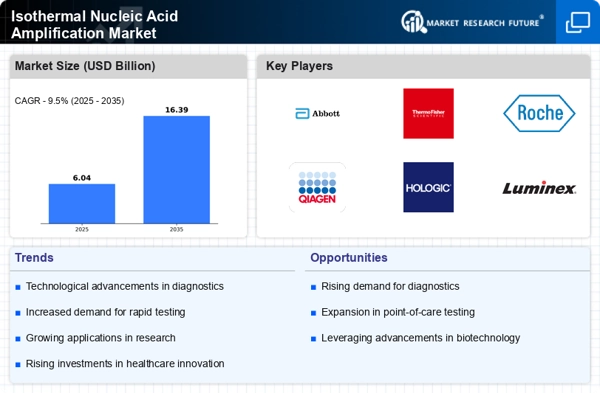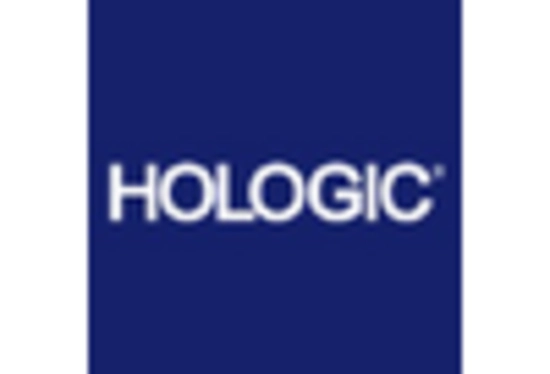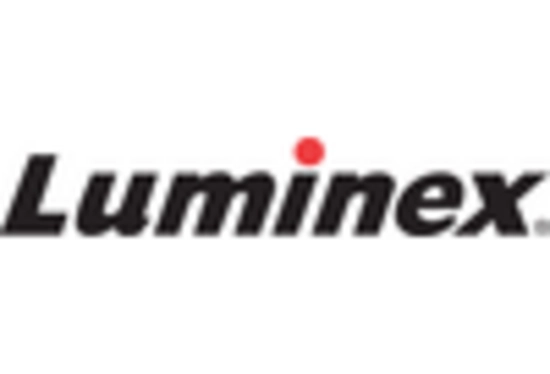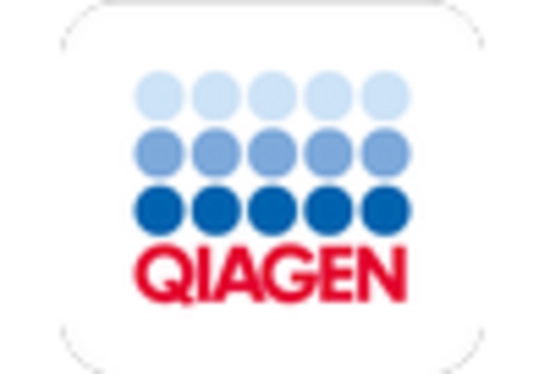Focus on Point-of-Care Testing
The Isothermal Nucleic Acid Amplification Market is aligning with the growing emphasis on point-of-care (POC) testing. This shift is largely influenced by the need for accessible and efficient diagnostic solutions in remote and underserved areas. Isothermal amplification technologies are particularly suited for POC applications due to their simplicity and rapid results. The market for POC testing is expected to reach USD 5 billion by 2025, with isothermal methods playing a pivotal role in this growth. The convenience of conducting tests outside traditional laboratory settings is likely to enhance patient outcomes and streamline healthcare processes, thereby reinforcing the market's trajectory.
Rising Prevalence of Infectious Diseases
The Isothermal Nucleic Acid Amplification Market is significantly impacted by the rising prevalence of infectious diseases worldwide. The increasing incidence of diseases such as tuberculosis, HIV, and various viral infections necessitates the development of efficient diagnostic tools. Isothermal amplification methods provide a rapid and reliable means of detecting these pathogens, which is crucial for timely treatment and containment. The World Health Organization has reported a steady increase in the number of reported cases, further emphasizing the need for advanced diagnostic solutions. This trend is expected to drive market growth, with projections indicating a potential market expansion of over 15% in the coming years.
Increased Demand for Rapid Testing Solutions
The Isothermal Nucleic Acid Amplification Market is witnessing heightened demand for rapid testing solutions, particularly in the fields of infectious disease diagnostics and food safety. The ability to deliver results within a short timeframe is becoming increasingly critical for healthcare providers and regulatory agencies. This demand is reflected in the market's expansion, with estimates suggesting a market size of over USD 1 billion by 2026. The urgency for timely diagnosis, especially in emergency situations, is propelling the adoption of isothermal amplification techniques, which offer quick turnaround times compared to traditional methods. Consequently, this trend is likely to drive further investments in research and development within the industry.
Growing Investment in Research and Development
The Isothermal Nucleic Acid Amplification Market is benefiting from growing investments in research and development (R&D) initiatives. As stakeholders recognize the potential of isothermal amplification technologies, funding for innovative projects is increasing. This investment is aimed at enhancing the sensitivity and specificity of diagnostic tests, as well as expanding their applications across various fields, including veterinary diagnostics and food safety. The market is projected to see a substantial increase in R&D spending, with estimates suggesting a growth rate of around 12% annually. This focus on innovation is likely to yield new products and solutions, further propelling the market forward.
Technological Advancements in Isothermal Nucleic Acid Amplification
The Isothermal Nucleic Acid Amplification Market is experiencing a surge in technological advancements that enhance the efficiency and accuracy of nucleic acid testing. Innovations such as loop-mediated isothermal amplification (LAMP) and recombinase polymerase amplification (RPA) are gaining traction. These technologies allow for rapid amplification of nucleic acids at a constant temperature, eliminating the need for complex thermal cycling equipment. As a result, the market is projected to grow at a compound annual growth rate (CAGR) of approximately 10% over the next five years. This growth is driven by the increasing adoption of these technologies in various applications, including clinical diagnostics and environmental monitoring, thereby expanding the market's reach.


















Leave a Comment